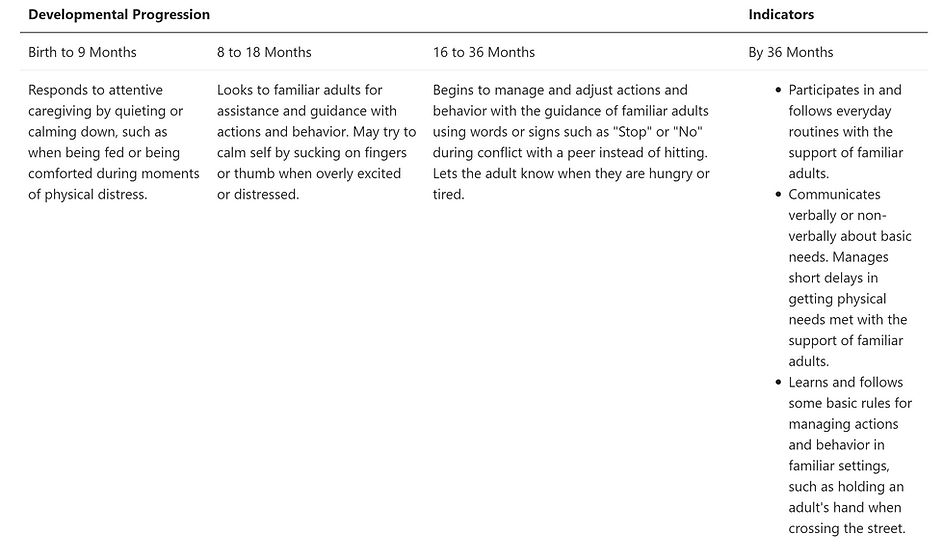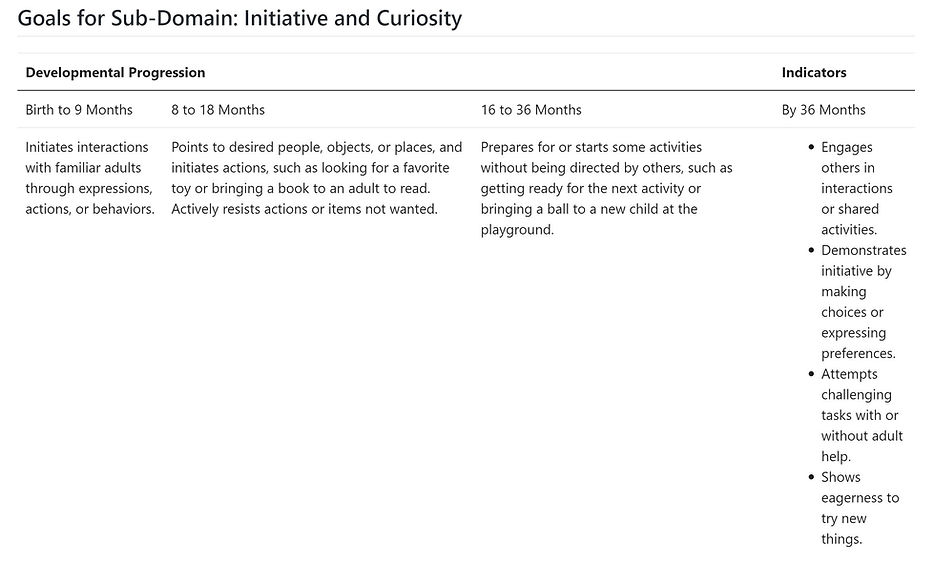
Click on "Explore Topics" for all topics and videos
or Quick Guide to topics below
Infant/Toddler
Learning Approach
and Progression

The first five years of life is a time of wondrous development and learning. Children grow from infants communicating through babbling and crawling on all fours—to toddlers speaking short sentences and beginning to run—to preschoolers telling detailed stories and kicking a ball to a friend. All young children learn in the context of caring, responsive, and stimulating relationships as they explore the world around them.
Yet, the quality of their early experiences can vary dramatically, and this can influence their learning and development. For example, by three years of age, some children have large vocabularies and others have much smaller ones. These differences usually reflect the everyday language experiences that children have with adults as well as other experiential and developmental factors. Such differences can have a lasting impact on later school success. Head Start and other early childhood programs must create stimulating learning environments and implement intentional teaching strategies that ensure all children are ready to succeed in school.
Family engagement and comprehensive services also play critical roles in children’s development and school readiness.
Emotional and Behavioral Self Regulation
Child manages feelings and emotions with support of familiar adults

Child manages actions and behavior with support of familiar adults

Cognitive Self-Regulation (Executive Functioning)
Child maintains focus and sustains attention with support

Child develops the ability to show persistence in actions and behavior

Child demonstrates the ability to be flexible in actions and behavior

Initiative and Curiosity
Child demonstrates emerging initiative in interactions, experiences, and explorations.

Child shows interest in and curiosity about objects, materials, or events.

Creativity
Child uses creativity to increase understanding and learning.

Child shows imagination in play and interactions with others.

